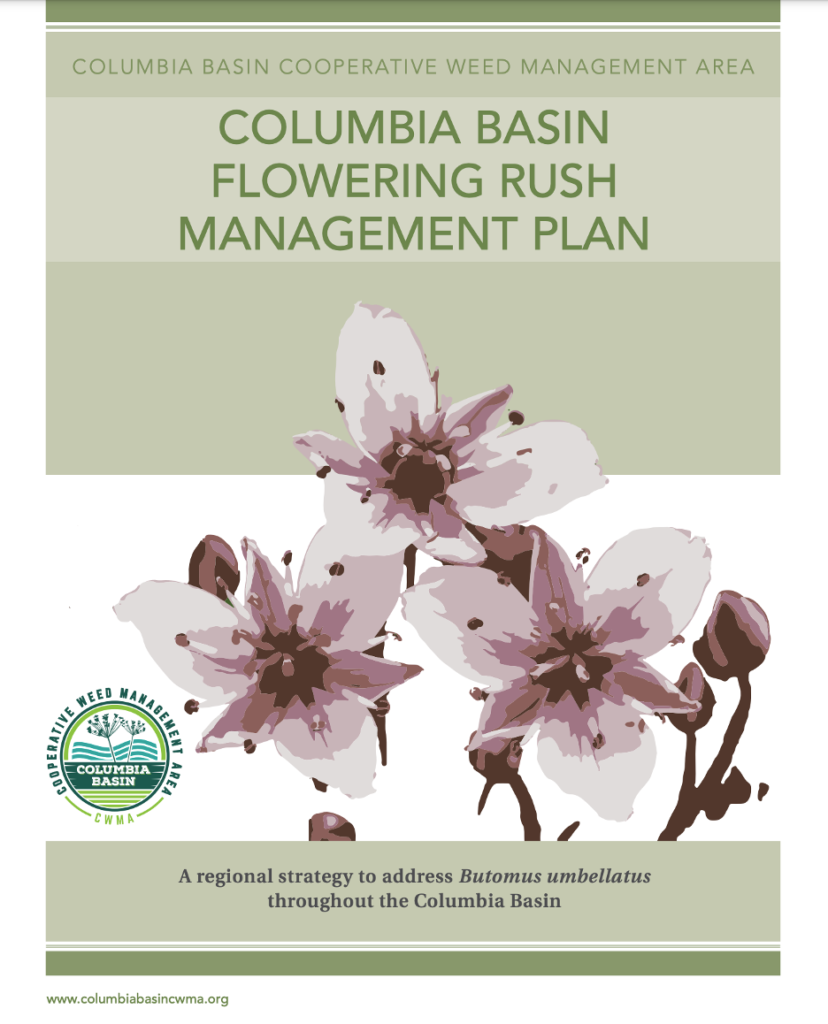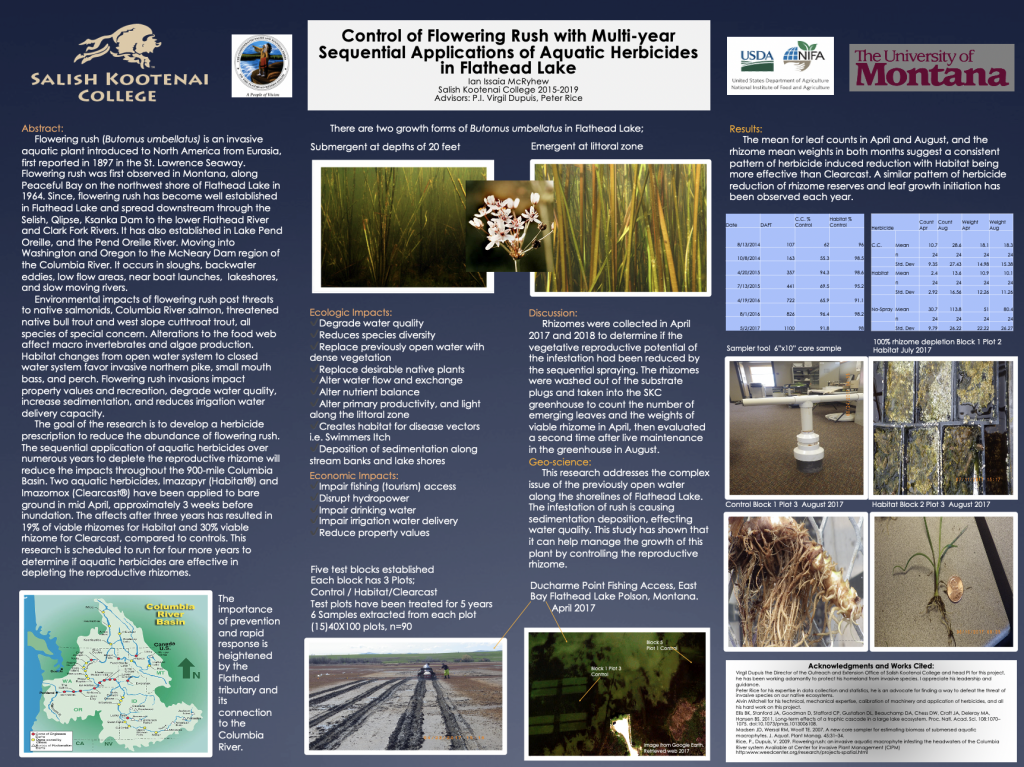Flowering Rush plants have easily colonized drawdown zones in the Pacific Northwest (Parkinson et al. 2011). Rhizome sprouting and growth is accelerated by receding water that exposes unvegetated or sparsely vegetated soils that also warm quickly (Parkinson et al. 2011). Habitats in Montana that naturally drawdown usually exhibit cycles of inundation in the winter and spring followed by a gradual evaporation of water through the summer. In these habitats, native plants germinate and grow as water recedes. Dams have altered this hydrological cycle, such that reservoirs and lakes are held at full pool during the summer and by late winter and early spring are at low pool. These areas promote the establishment and growth of Flowering Rush because exposed late winter to early spring soils are moist with little to no competition from native vegetation (Parkinson et al. 2011). Irrigation canals exhibit a similar hydrology and are susceptible to invasion by Flowering Rush.

http://columbiabasincwma.org/flowering-rush-management-plan/

USACE WATER RESOURCES REFORM AND DEVELOPMENT ACT OF 2014:
FLOWERING RUSH CONTROL WALLA WALLA DISTRICT WASHINGTON
AQUATIC PLANT CONTROL PROGRAM SECTION 104 OF THE RIVER AND HARBOR ACT OF 1958 (33 U.S.C. §610), AS AMENDED FLOWERING RUSH CONTROL WASHINGTON, IDAHO, OREGON, MONTANA
Flowering Rush IDT Final Draft EA
Appendix A. Herbicide Handling plan
Appendix B. – Herbicide Labels